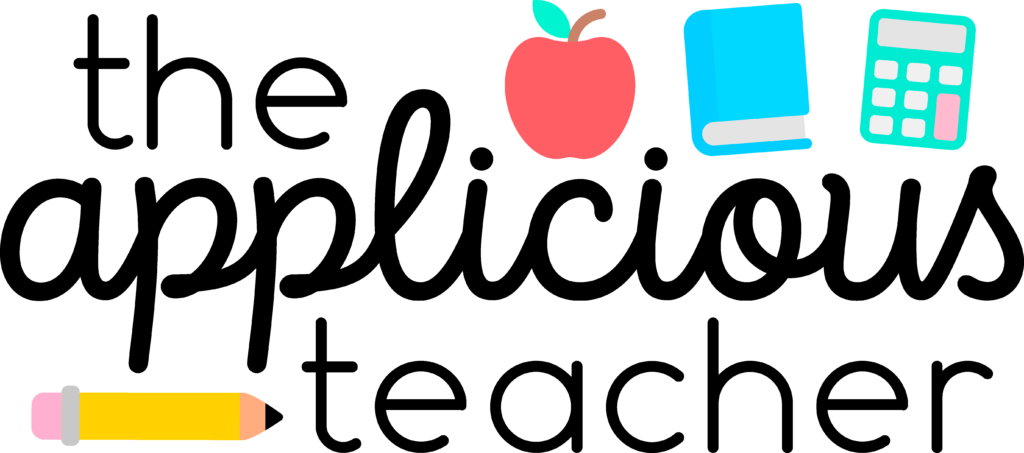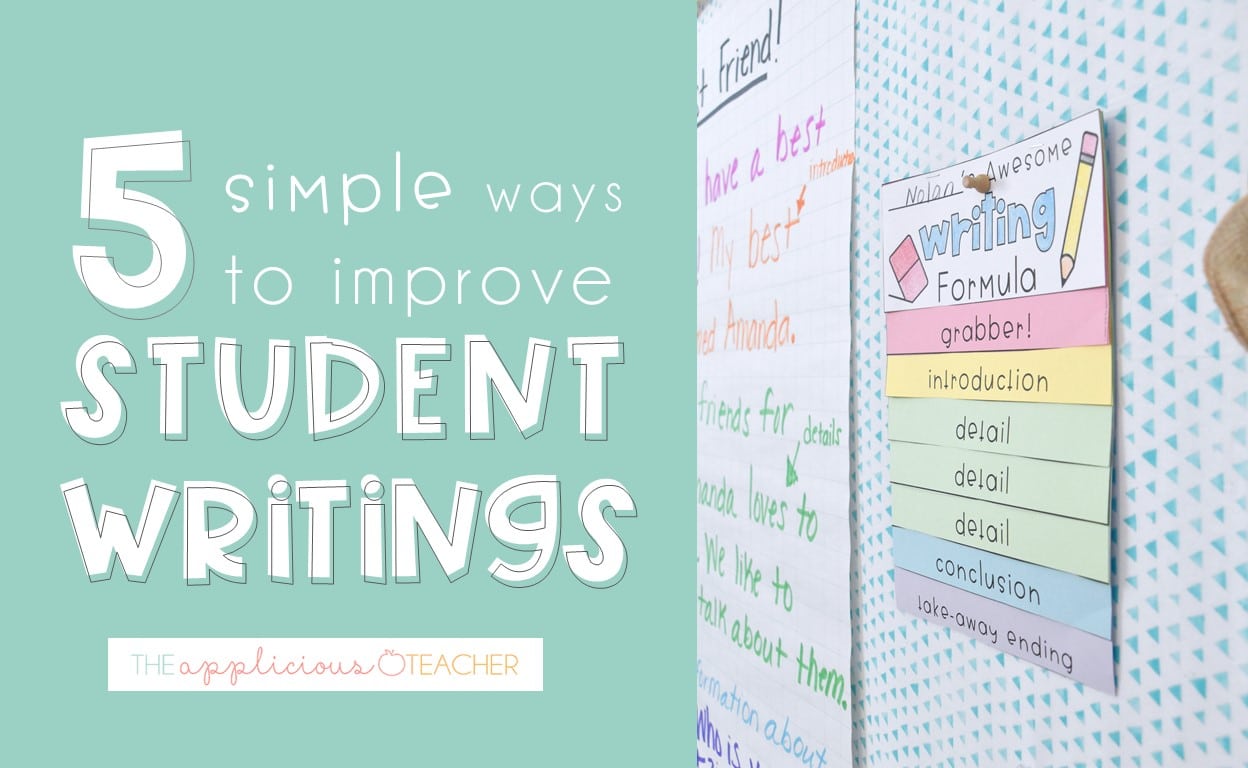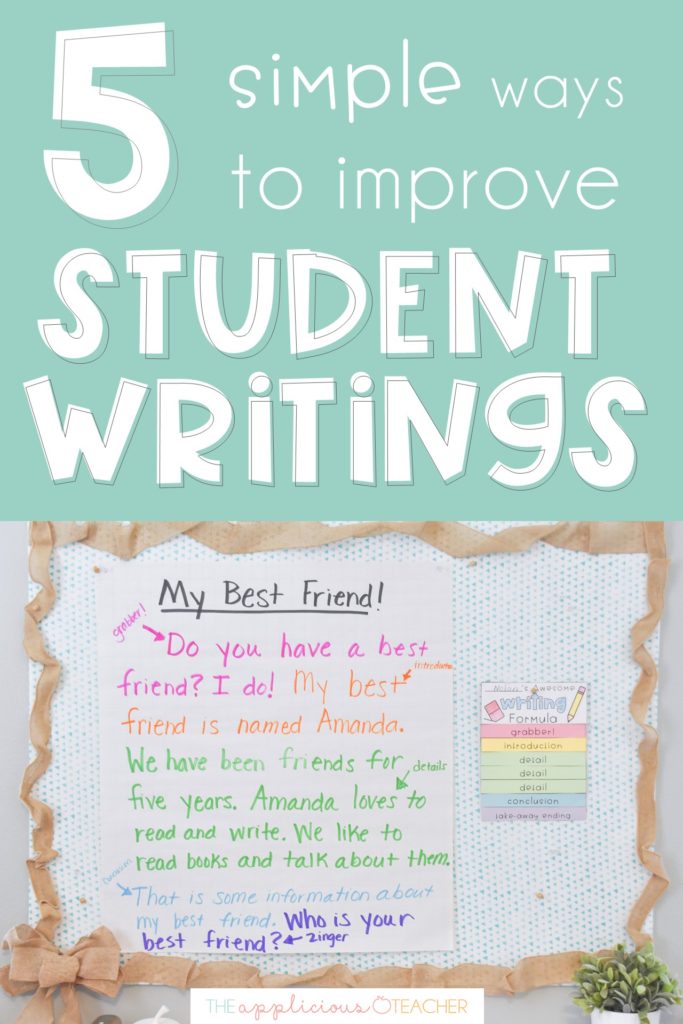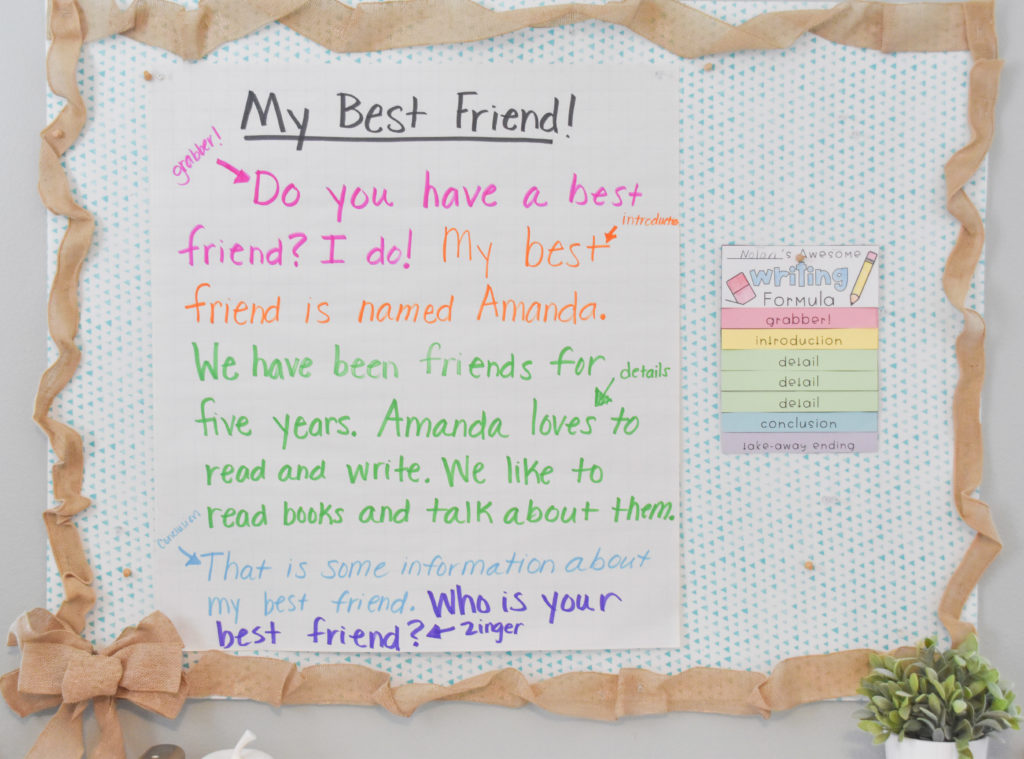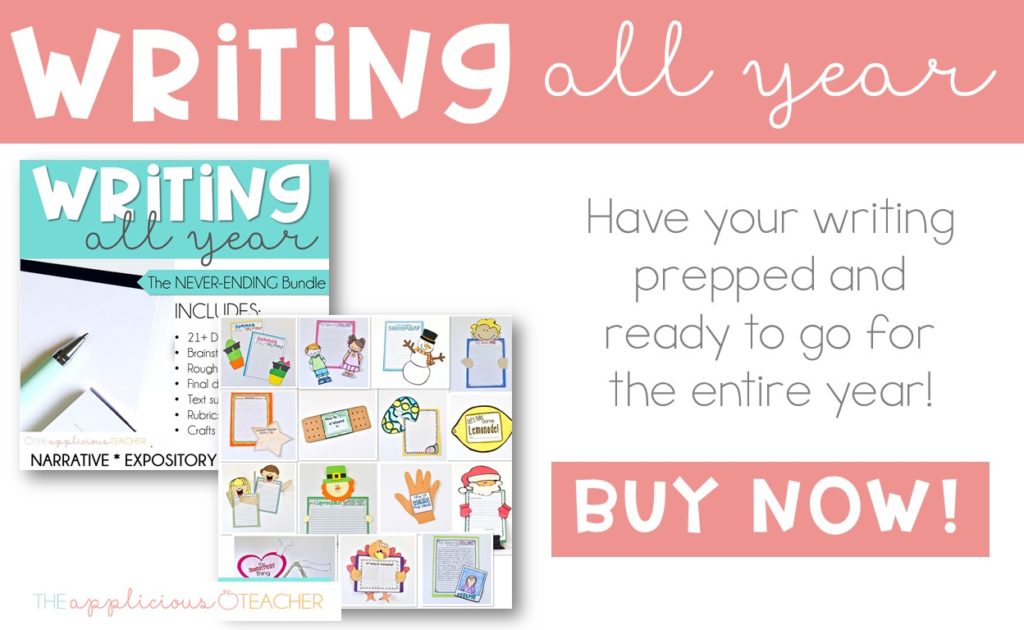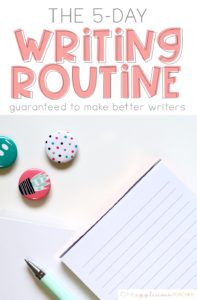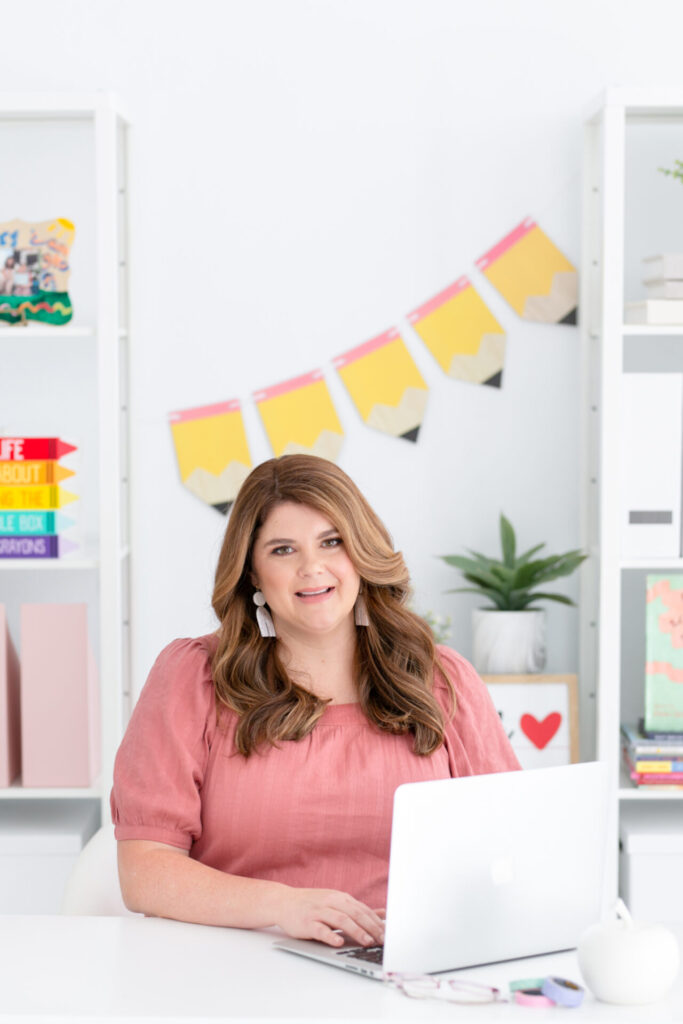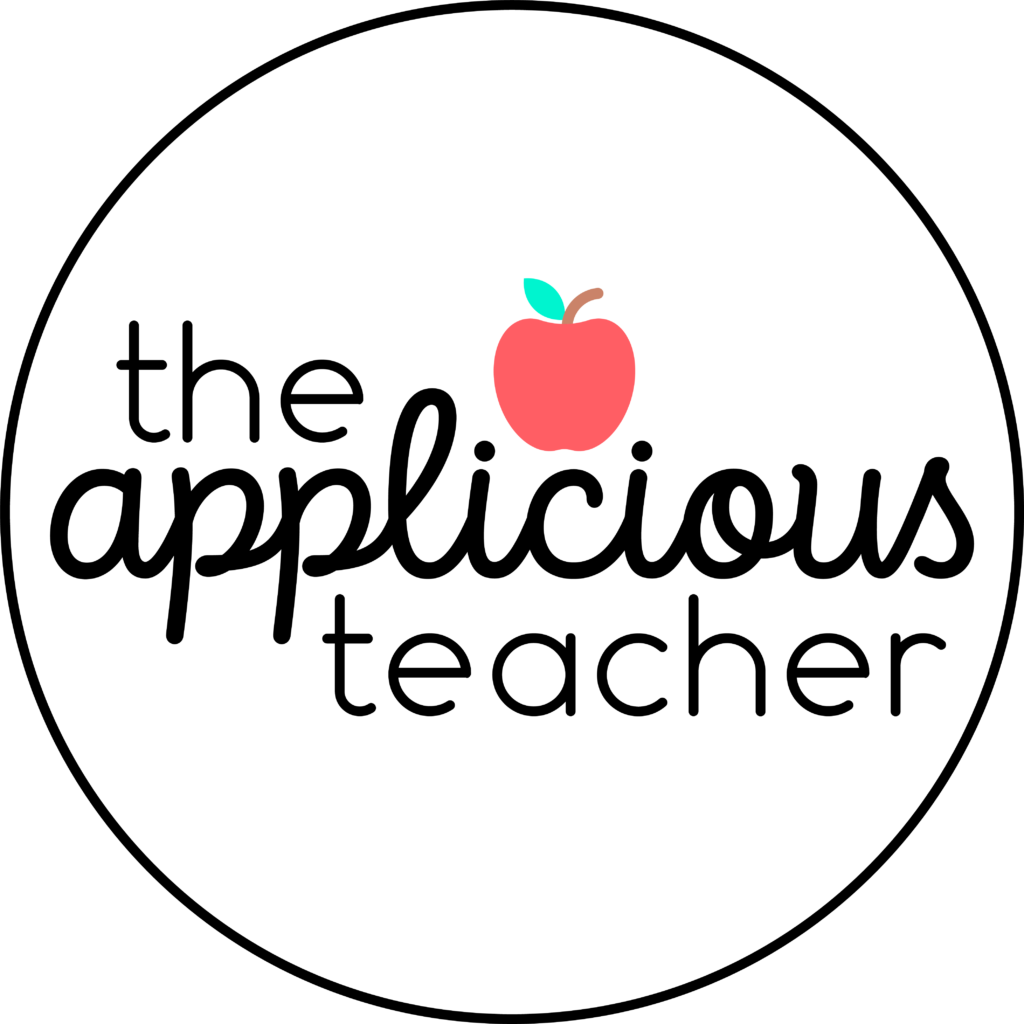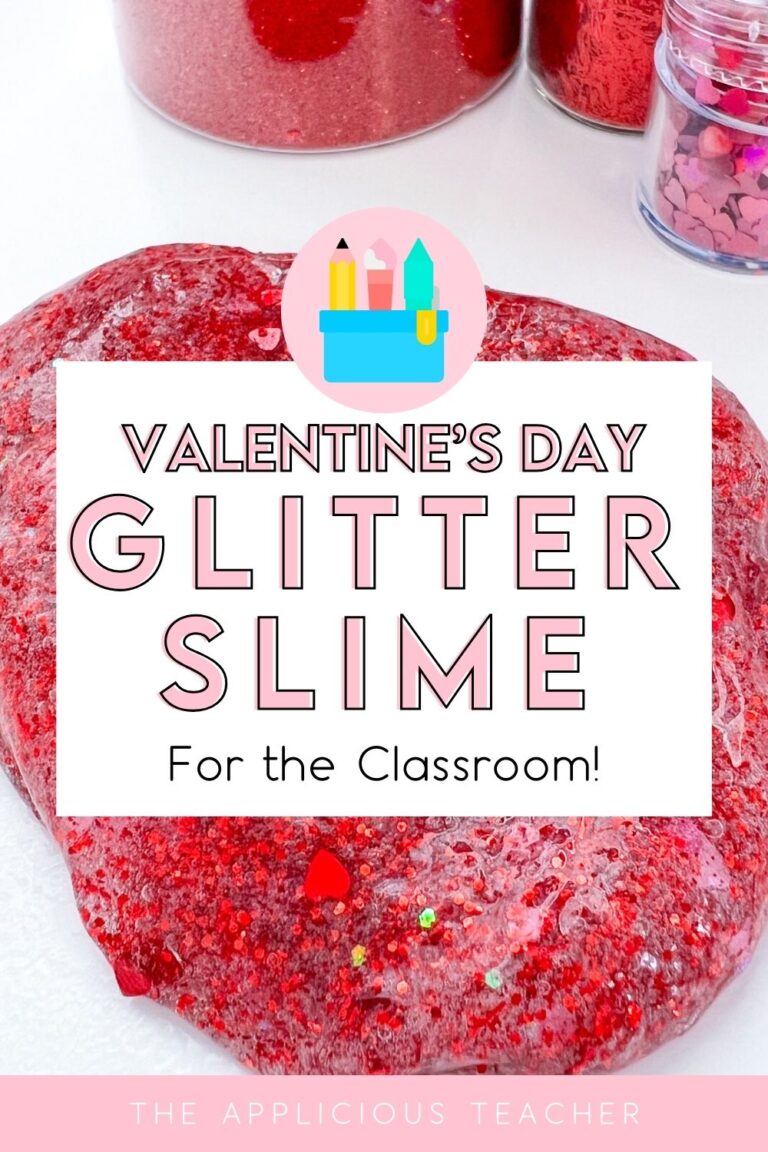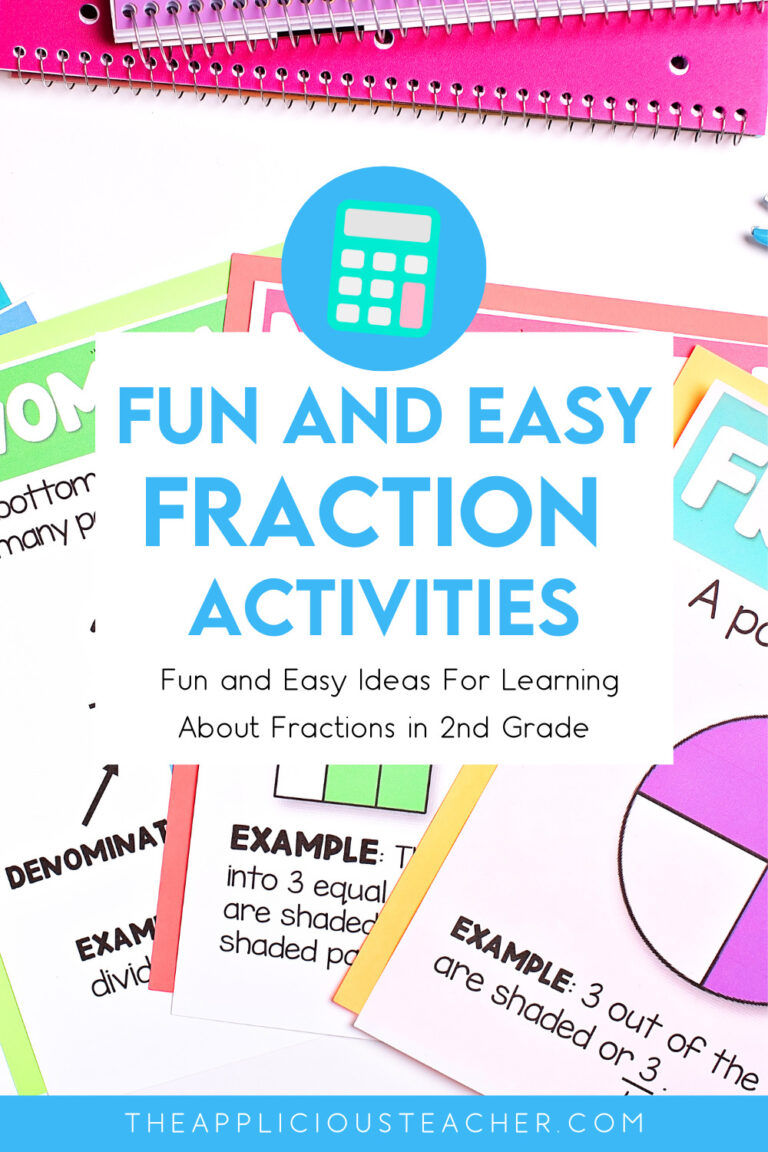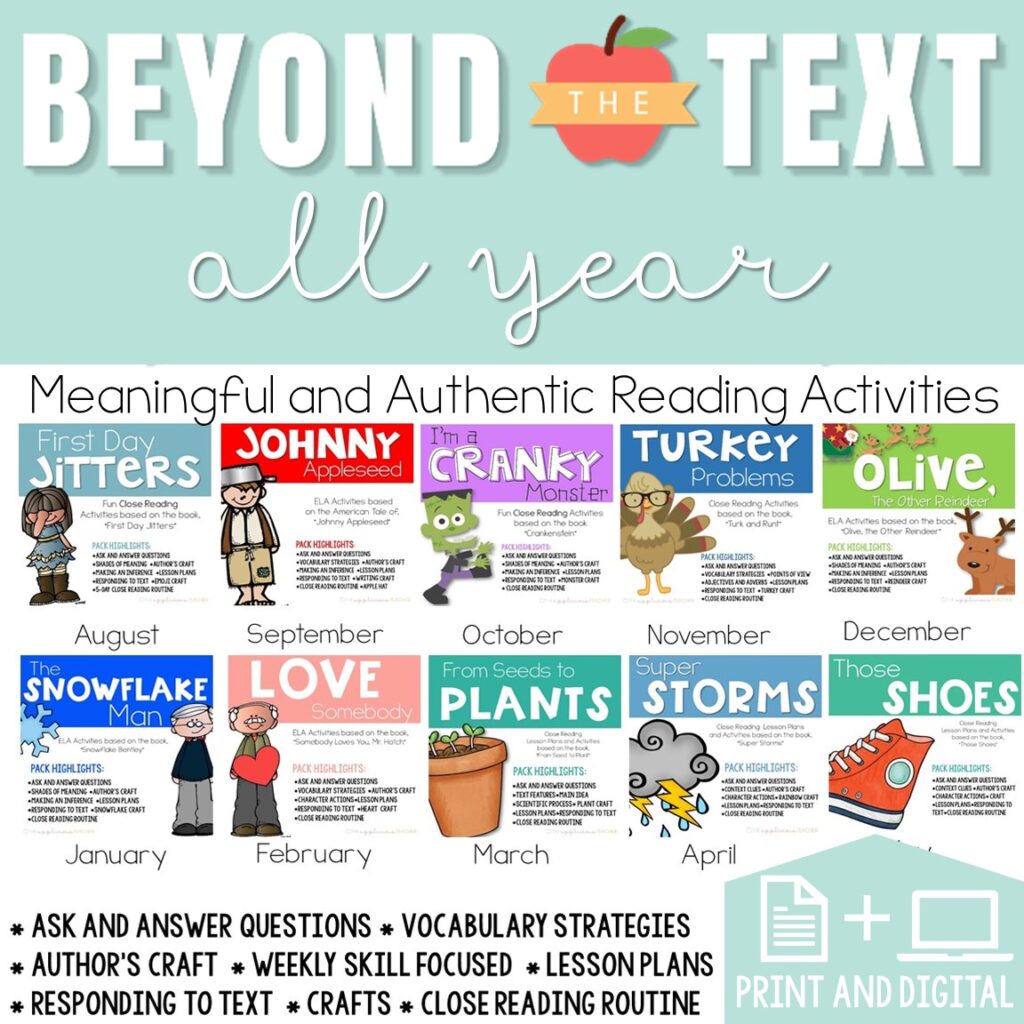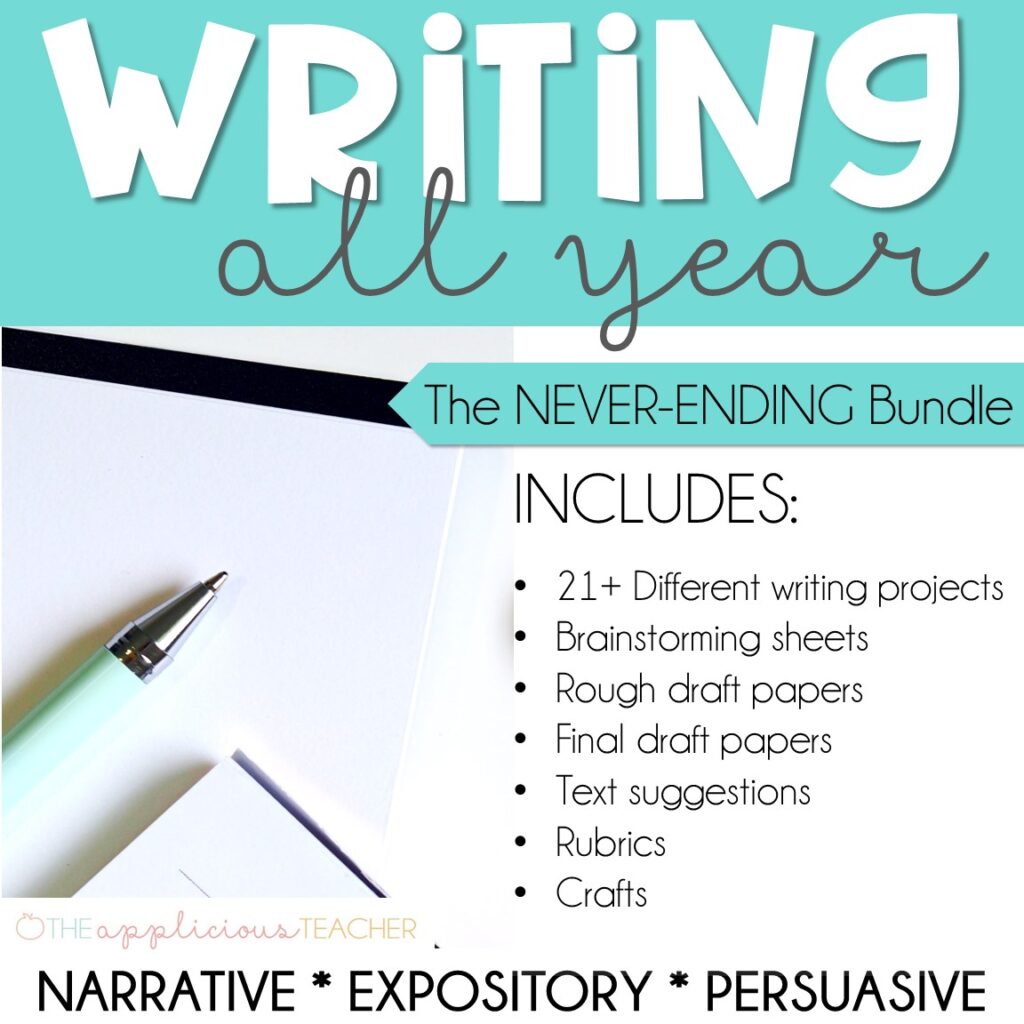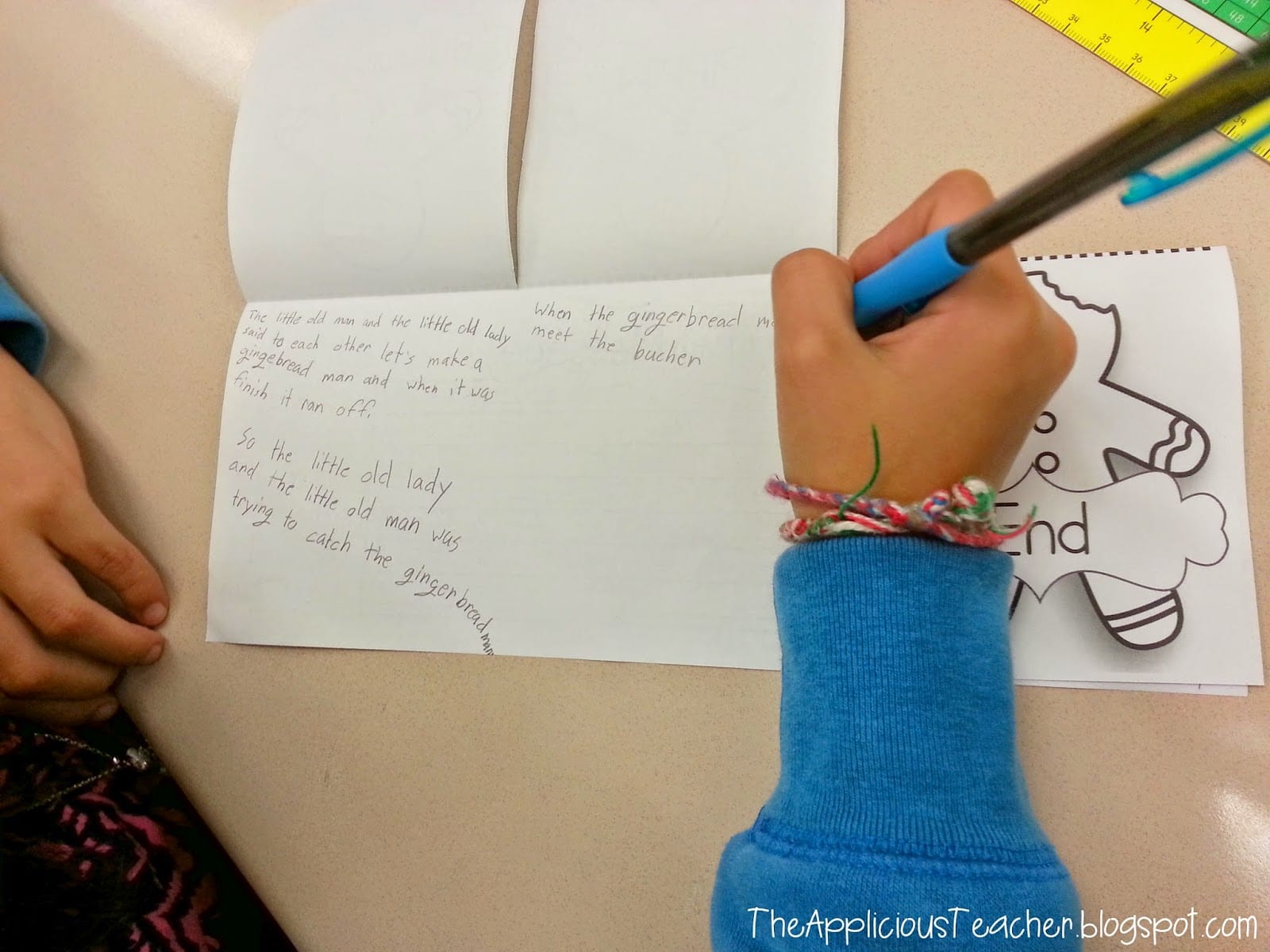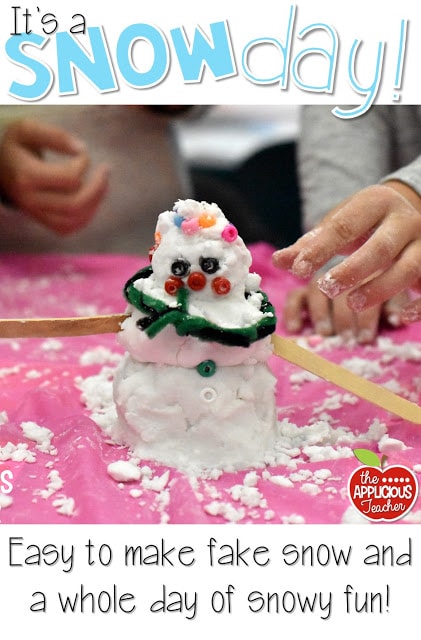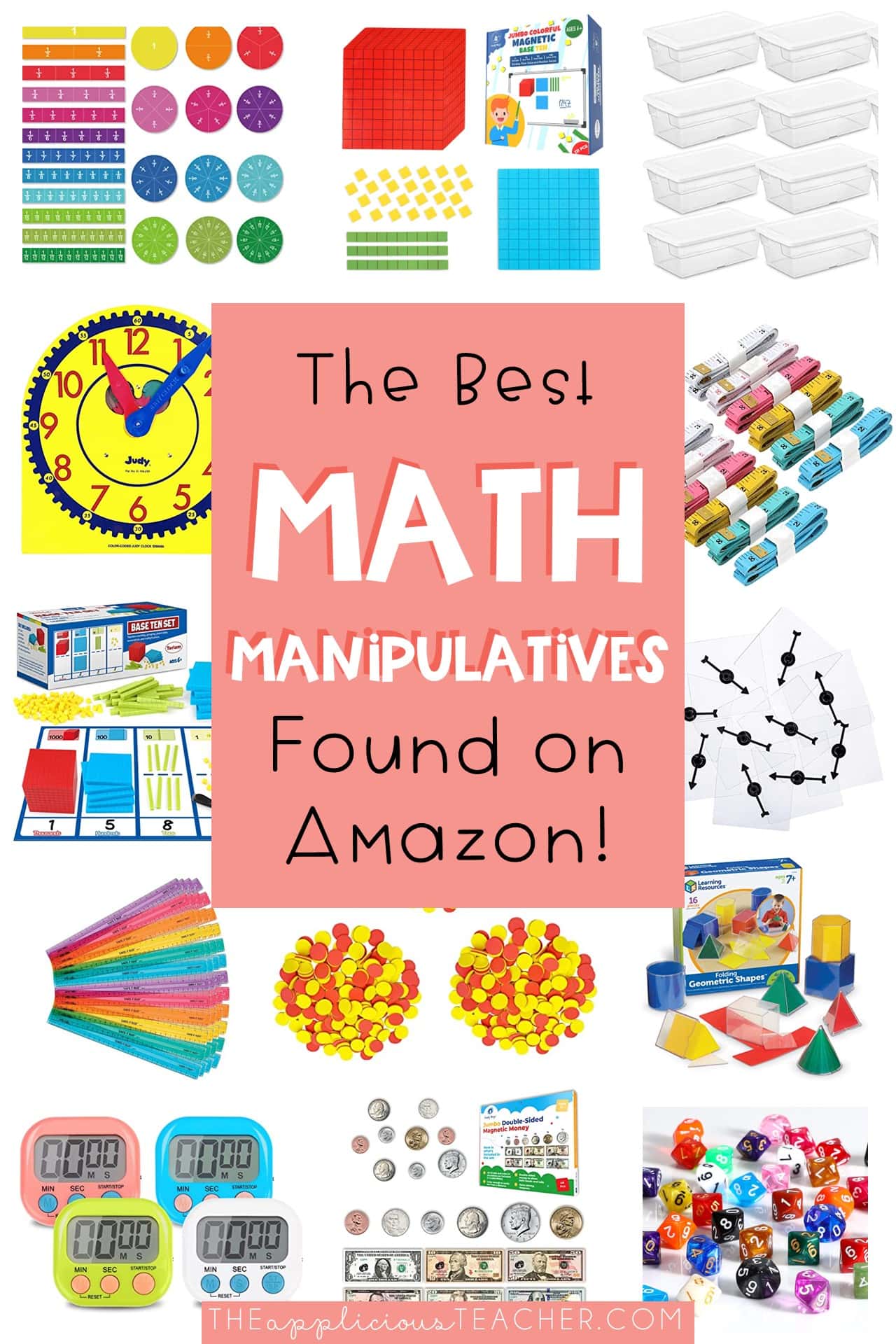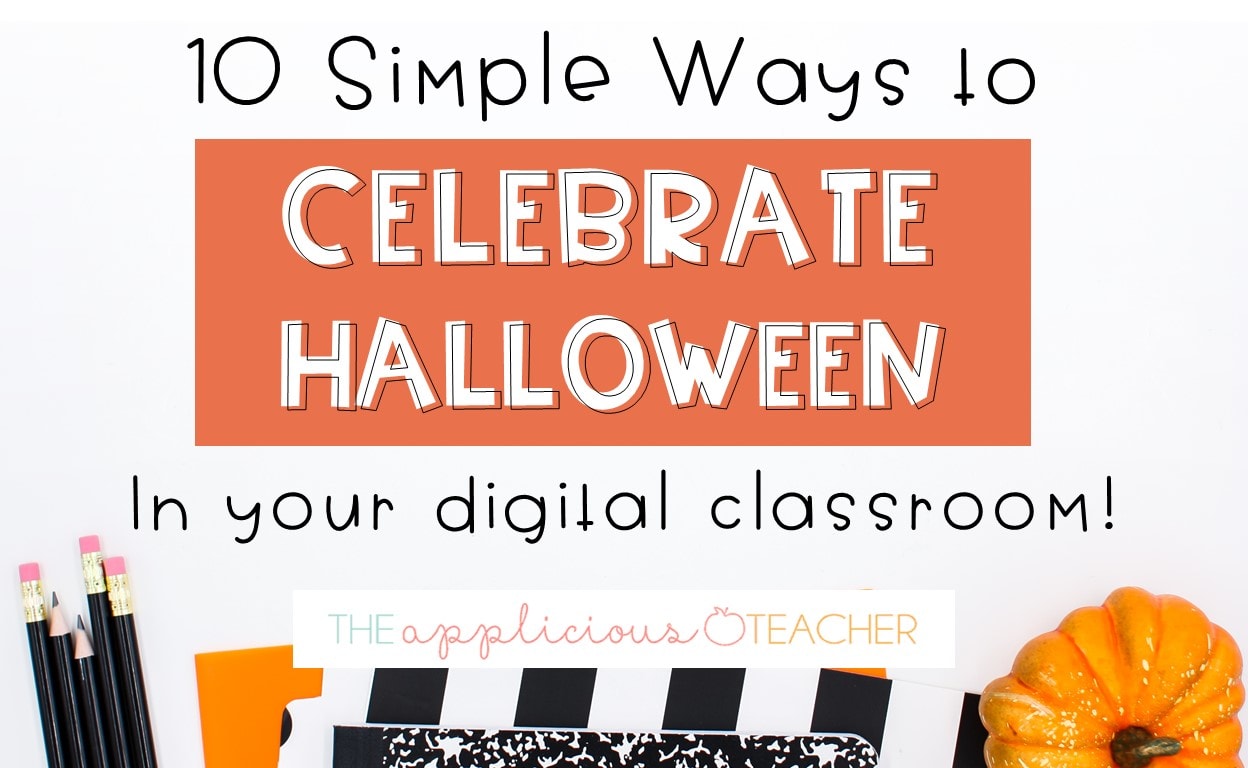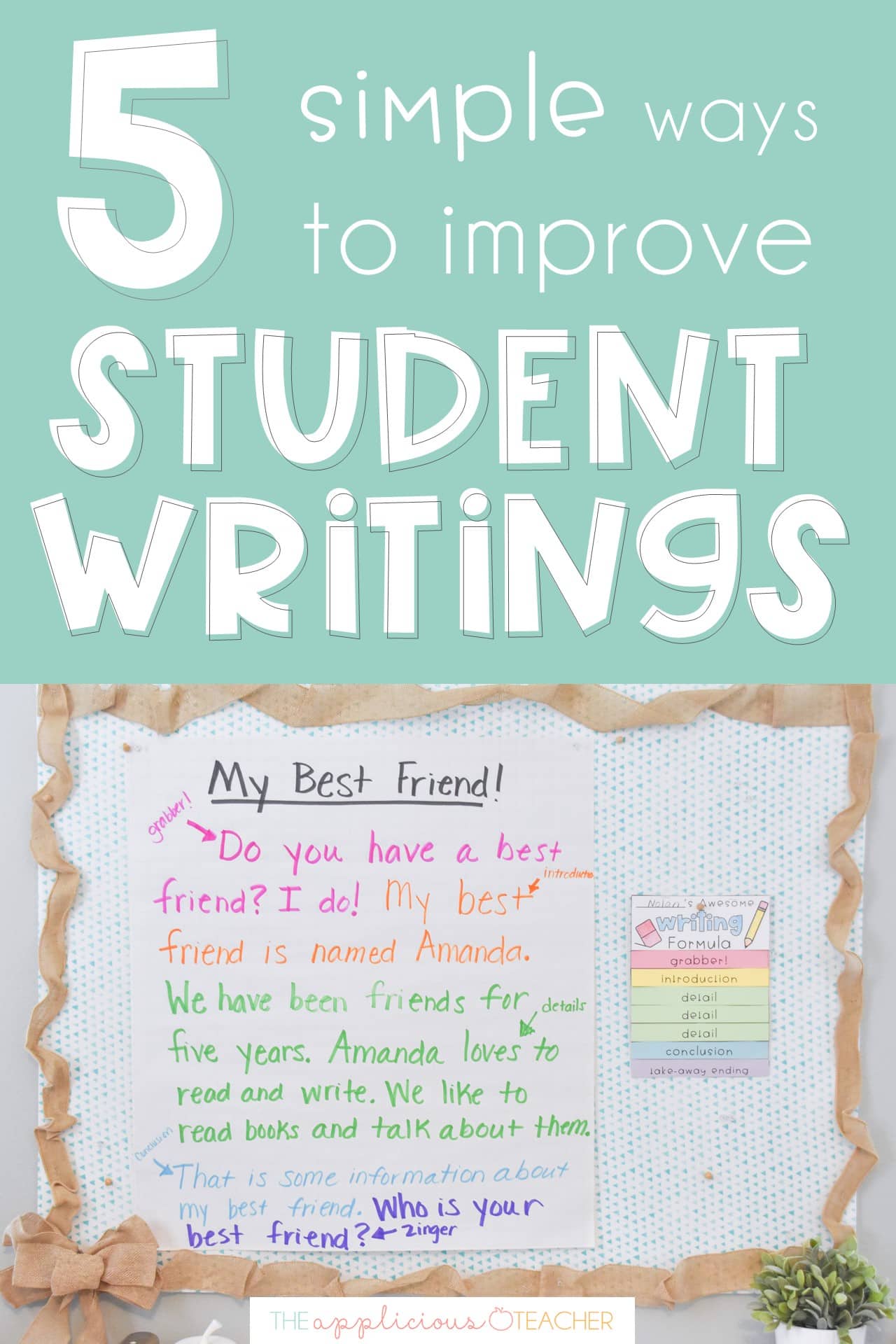
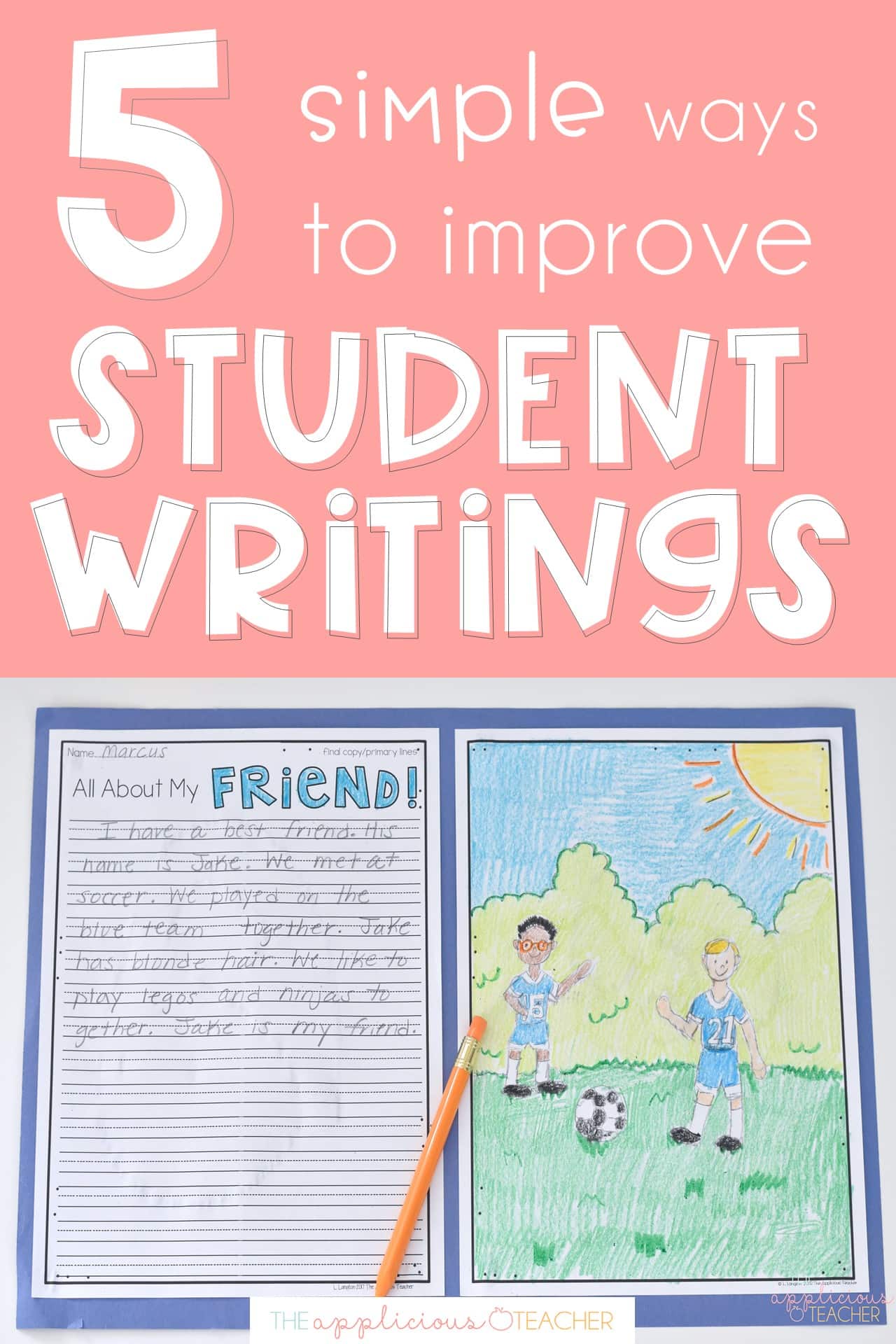
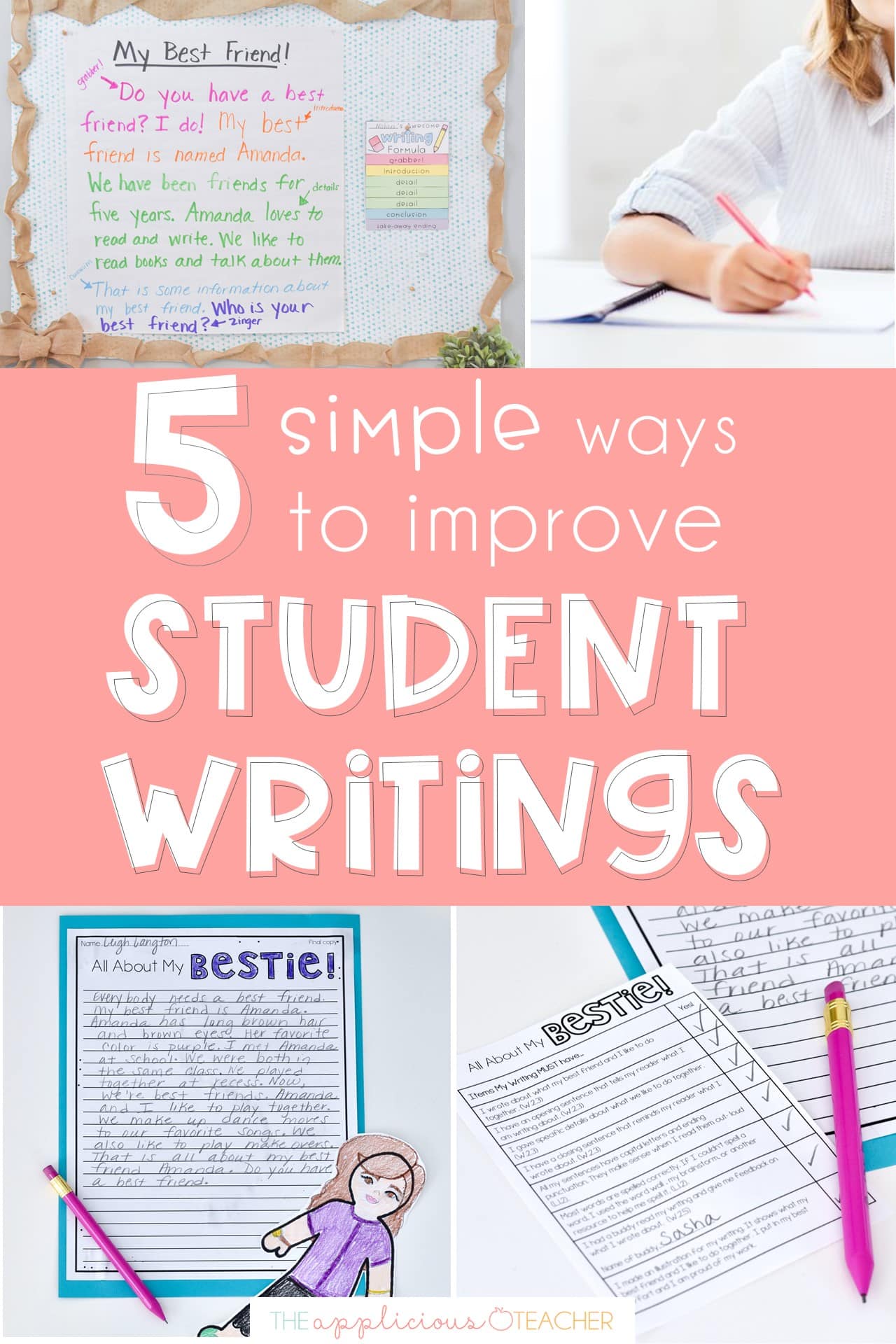
Time for some real talk… Writing is always (I mean ALWAYS!) an area of “opportunity” for my fresh-faced second graders. I’ve decided that writing must be the “summer slip” for first graders. They are out of practice! But, what could I do as their teacher to help rebuild and expand on their writing? I found that my students have tremendous growth and maturity in their writing after I used just few quick tips! We’re talking five-paragraph essays from 8-year-olds, peeps! So today, I’m sharing five easy tips for improving students’ writing!
Tip For Improving Student Writing #1: MODEL! MODEL! MODEL!
Although it’s not ground-breaking, I cannot stress this one enough! If we want students to write, WE have to write, too. Almost every writing lesson I do, I model what I am looking for. And not just a “here’s what it should look/sound like model”… but an “actually writing it out in front of them” model!
Things you can model for your students:
- indenting paragraphs on lined paper.
- capitalization and using the correct ending punctuation.
- using the word wall as a resource for words you are not sure how to spell. 😉
- re-reading what is written out-loud to make sure it makes sense.
- how to use a brainstorm to shape your writing
- beefing up a sentence using strong verbs and adjectives
So, when in doubt…? MODEL.MODEL.MODEL!
How This Looks in the Classroom
Alright, let’s discuss how this looks in my classroom. At the beginning of the year, when we’re working on a writing piece, my modeling looks much different than it will towards the end of the year. There is a high level of scaffolding, with simple text structure and content. I expect that most of my students will copy what I am writing, so I move slowly through the process.
Most of the writing magic happens on my whiteboard, so it’s hard to share what my writings look like because I *gasp* erase them! But here’s an example of a writing sample I made with my class when we were working on expository writings about our best friends.
As the year progresses, I still model. It just starts to mutate into less about what I am writing and more about what the students are writing. I might only write the grabber and an introduction sentence (more on those in a minute!) and then let the students fill in the supporting details. I may even swing back through at the end to brainstorm a few conclusion sentences and suggestions for zingers (Stay tuned!) As students are writing, I usually walk around and spot-check each student’s piece. This includes reading a few sentences out-loud, discussing word choice, and brainstorming ideas.
It’s important that you slowly let go as you model. You don’t always want to be writing a full out piece every single time your class sits down to write. But, you also don’t want to quit cold turkey. This could result in a riot! Not that I’ve had any personal experience with this… 😉 By the end of the year, my modeled writings become something to start from and students use them as they need to. I like to think of it as my time to enjoy the fruits of my labor! It is a beautiful sight to see when an eight-year-old writes a full-length expository essay with little to no help from their teacher!! #teachersdream #thatcanbereallifefolks
Tip for Improve Student Writing #2: Teach a Writing Formula
Writing formulas:
- B, 1-2-3, E – Stands for Beginning, 3 details, and an Ending. Works great with narratives!
- The Writing Robot – First, Then, Next, Last. Will do wonders for “How To’s.”
- The Awesome Writing formula- Grabber, Introduction, 3 details, closing, and a Zinger. (This is my favorite!)
Let’ talk about The Awesome Writing Formula! I love this formula because it lends itself nicely to just a one-paragraph writing piece or can serve as a basis for a five-paragraph essay. This formula can be stretched and modified so easily for almost any genre of writing and guarantees an almost perfect written work every time!
At the beginning of the year, I like to create this tab book foldable with my kiddos to help cement the formula I’d like for them to use.
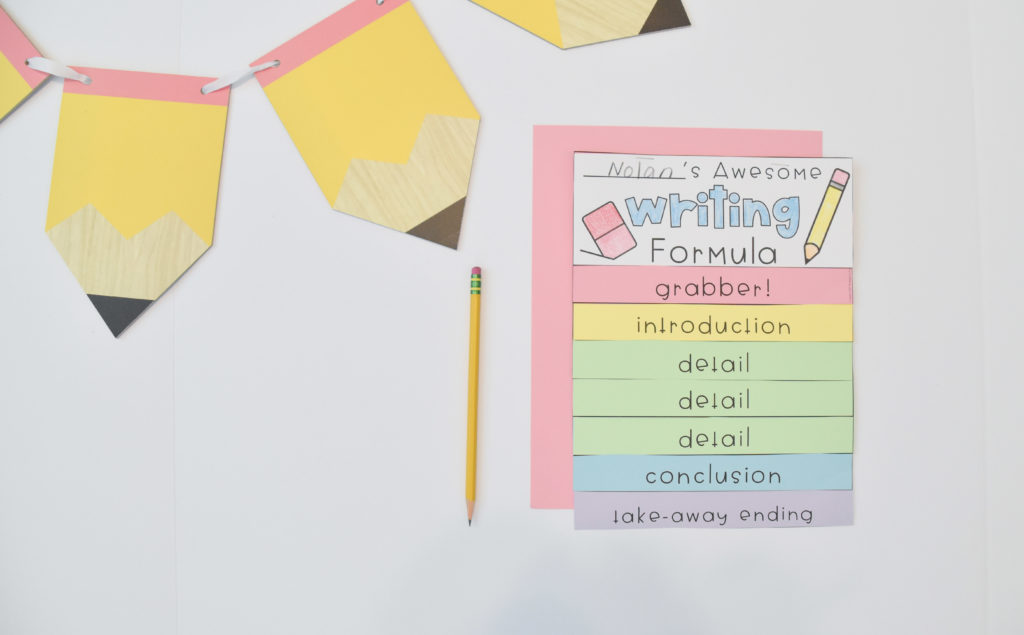
The Awesome Writing Formula sections:
- Grabber– Something to get your reader’s attention. It could be a question, a sound word, or an event. Something that makes your reader say, “Hey,I want to read this!”
- Introduction- Tells your reader what you are writing about.
- 3 Details- Give three solid details to support your introduction. This is great because later, students can use these details to create full detailed paragraphs in a much longer piece of writing.
- Conclusion- Remind your reader what you wrote.
- Zinger- (*Side-snap*) A question, a quote, a foresight… basically, something that leaves your reader wondering more and thinking back to what a great writing this was!
Once you’ve figured out your formula routine, stick to it. Refer back to it often. Use it every time you write. For a few of our writings at the beginning of the year, I like to have students color-code the specific parts using matching markers. Once the writing formula becomes a routine, you’ll find students will continue to naturally use it every time they write.
Use this tab-book in your classroom too! Buy it here in my TpT Store!
Improving Student Writings Tip #3: Use a Rubric
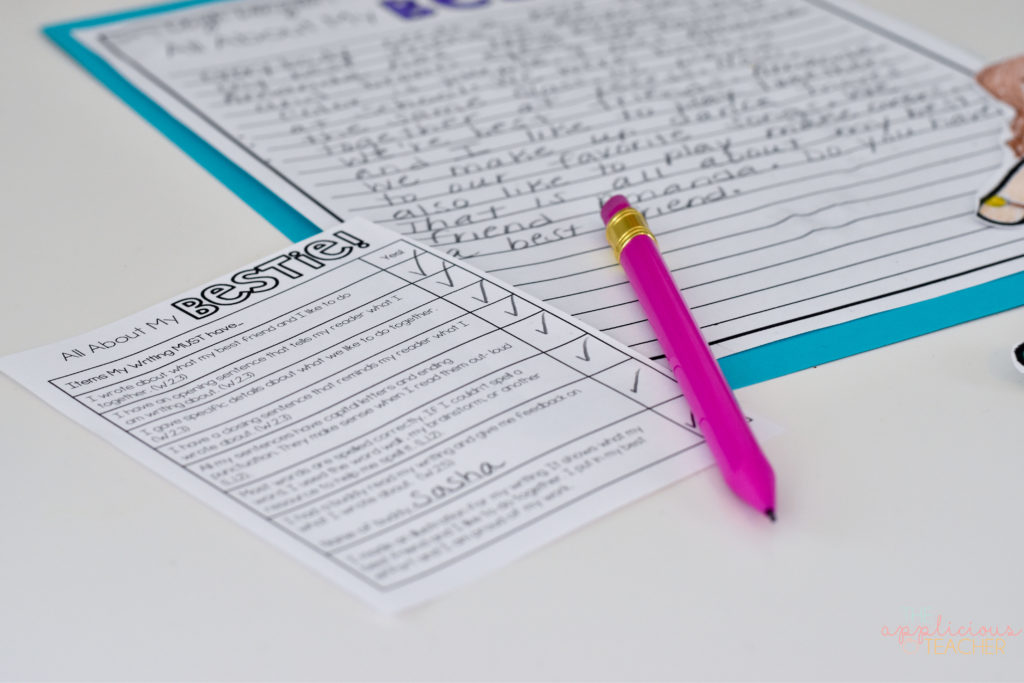
How This Looks in the Classroom:
Rubrics are such a great way to remind students what a good piece includes. When you’re first introducing the rubric, be sure to model how you are going back through the writing to find the items from the rubric and checking them off. Did I mention they make it easy to grade, too? 😉
At the beginning of the year, I create the rubric; but, as the year progresses, students start to add their own input. They can create their own rubrics! What a great way for students to take ownership, right?!
Improving Student Writing Tip #4: Buddy Editing
This little tip stems from the Common Core Standard that discusses using peer editors. Now, I know what you’re thinking, “My littles can barely read, let alone read each other’s writings.” But I PROMISE it will be worth your while! Pinkie promise! Just stay with me on this one…
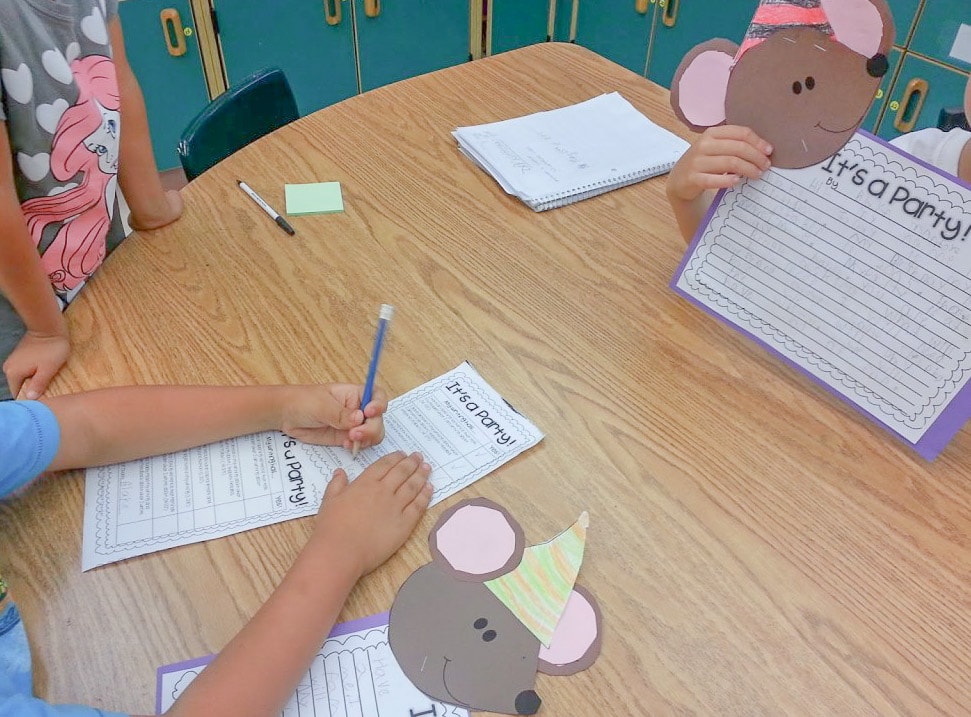
How this looks in the classroom:
- Keep it age-appropriate. I don’t teach editing symbols in 2nd grade, but I am sure I would if I taught 3rd or higher. I do teach that it’s the buddy’s job to make sure the writing makes sense, has good conventions (capitals and periods), and contains all the pieces in our writing formula (see tip #2). For younger students, you could have them use the “2 Stars and a Wish” technique where, after sharing their piece, each student gives 2 kudos and 1 suggestion or question for the writing.
- Use pencil only! Just because you taught them how to edit, doesn’t mean they’ll do it perfectly every time. Pencil allows for those little marks to be erased or moved while you’re editing later.
- Not all editors are created equal. Just like not every student masters a concept on the first try, not everyone will be an amazing peer editor. Just remember that practice makes perfect and modeling makes it even better! 🙂
Alright, now for the last tip…
Improve Student Writings Tip #5: One on One Conference
How this looks in the classroom:
So how do you make the time? I usually plan “editing” sessions into my writing workshop for several days. As students finish their rough drafts, they pull out their “unfinished work” folder. This is a signal to me that they are ready for me to look over their work. I’ll call them to my back table, have the conference, and then send them on their way to work on their final copy.
While students wait, they can be working on an illustration, the craft that goes with it (I love my writing crafts!), or reading a book. It’s dangerous to just have students sit. Don’t play with classroom management fire! Make sure you have something meaningful for them to complete while you work through the crowd.
Have Your Writing DONE for the Year
Does planning your writing week after week stress you out? Take the stress out of creating meaningful and powerful writing opportunities with this chunky writing bundle!
Whew!! Did you get all the tips?! Now it’s your turn! What is one thing you hope to implement to better your little authors this year? It could be something from my tips listed here, or another tidbit you picked up along the way! Let me know in the comments!
More Writing Posts
Need more writing ideas? Check out these popular posts!
